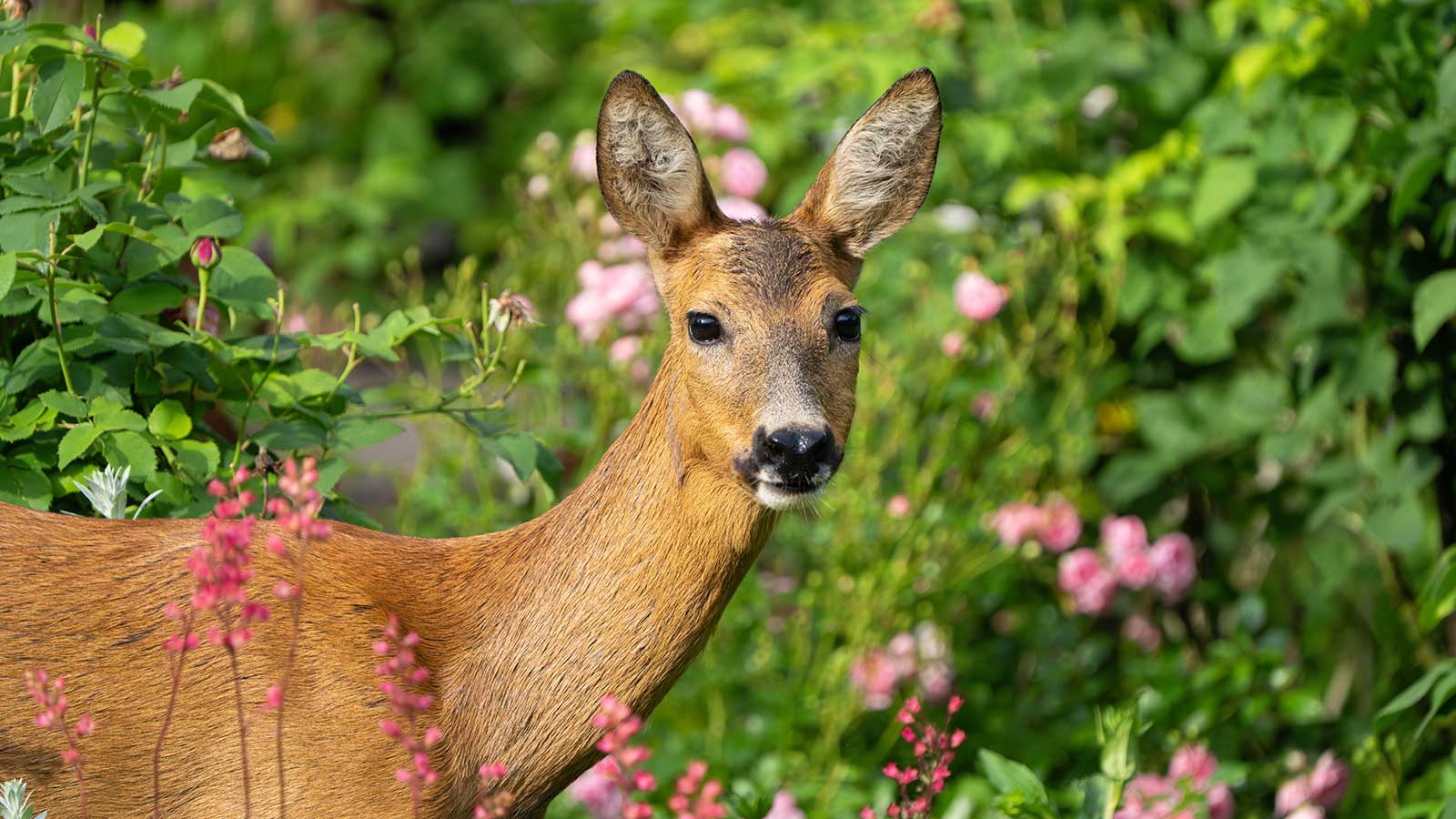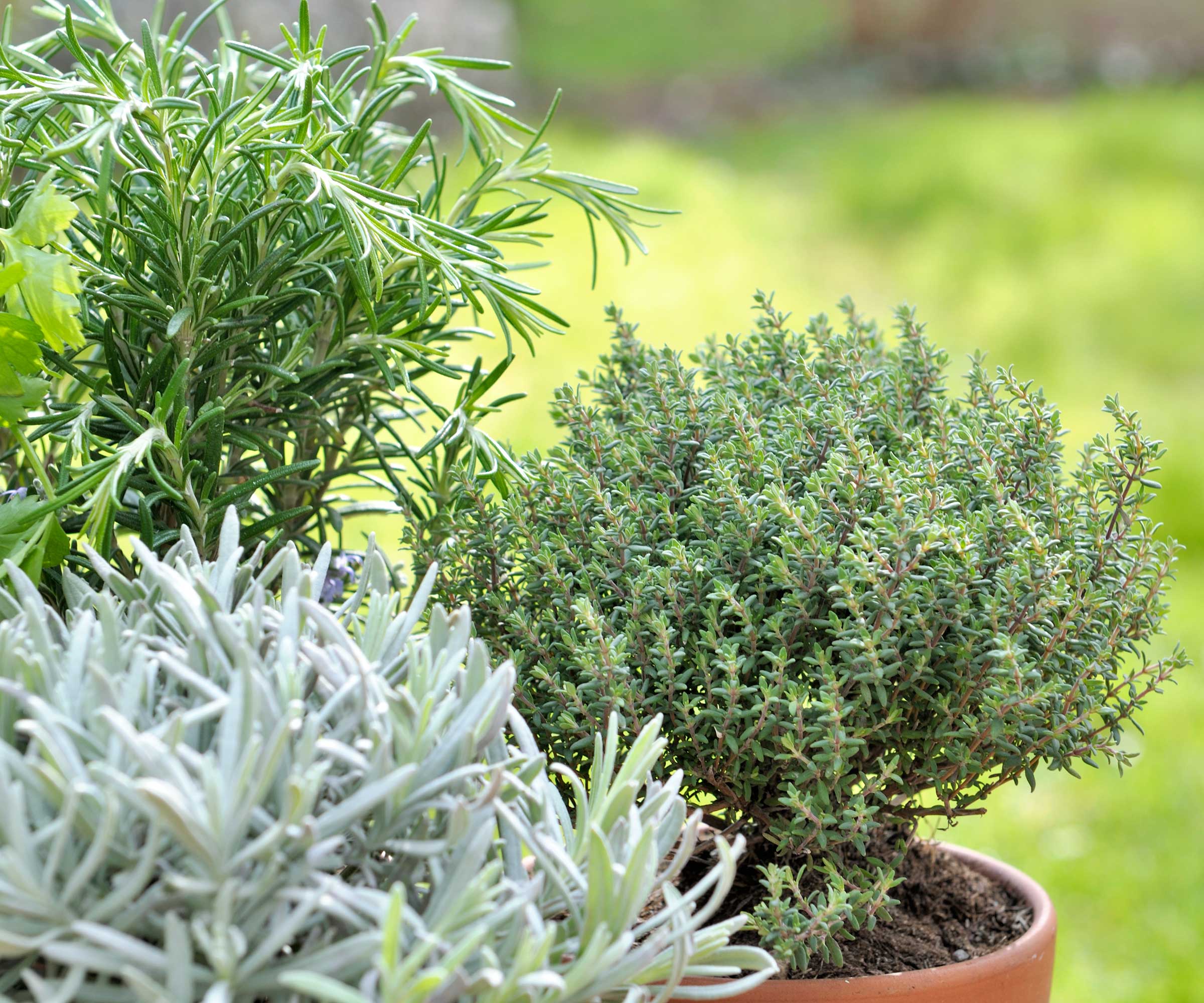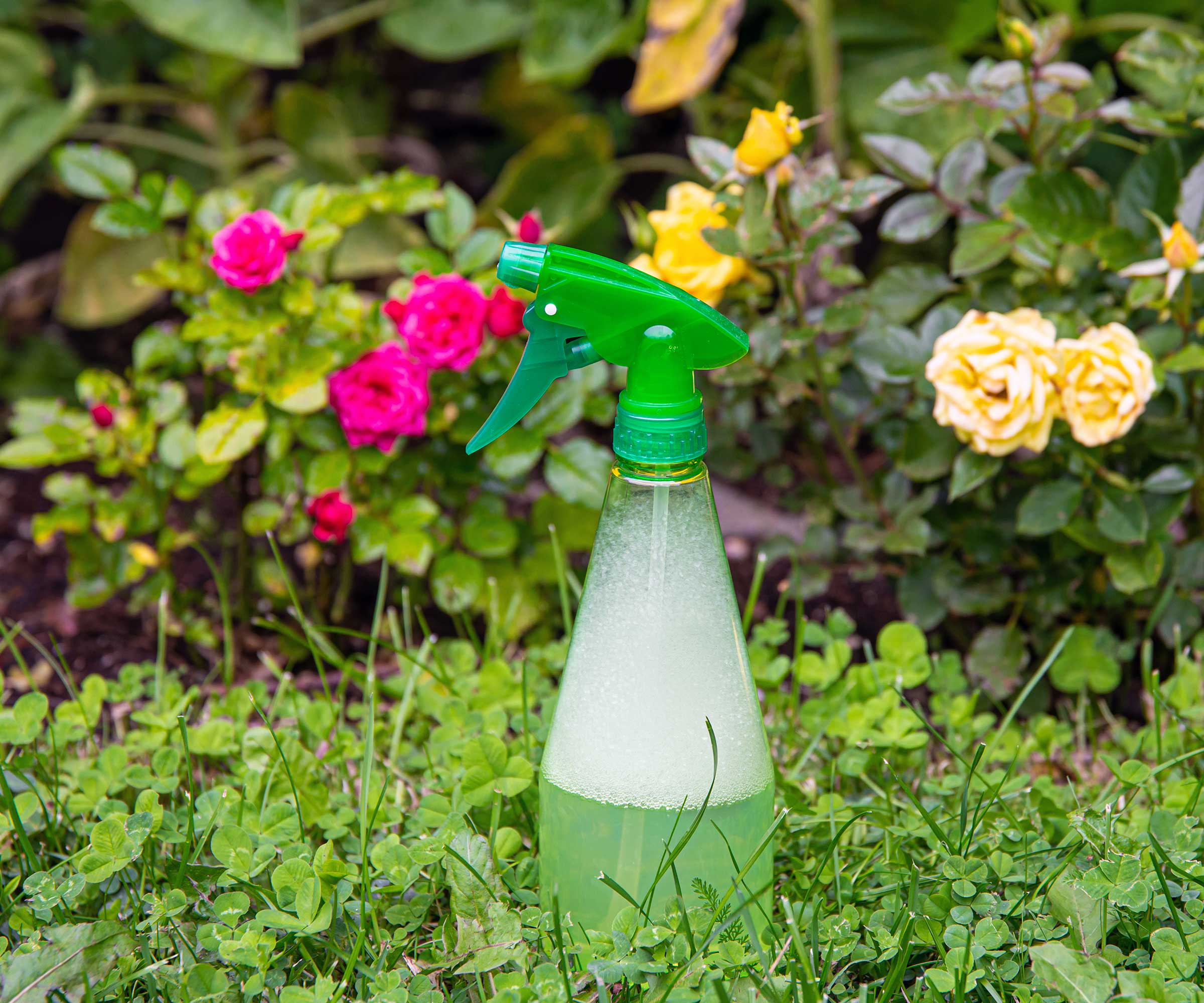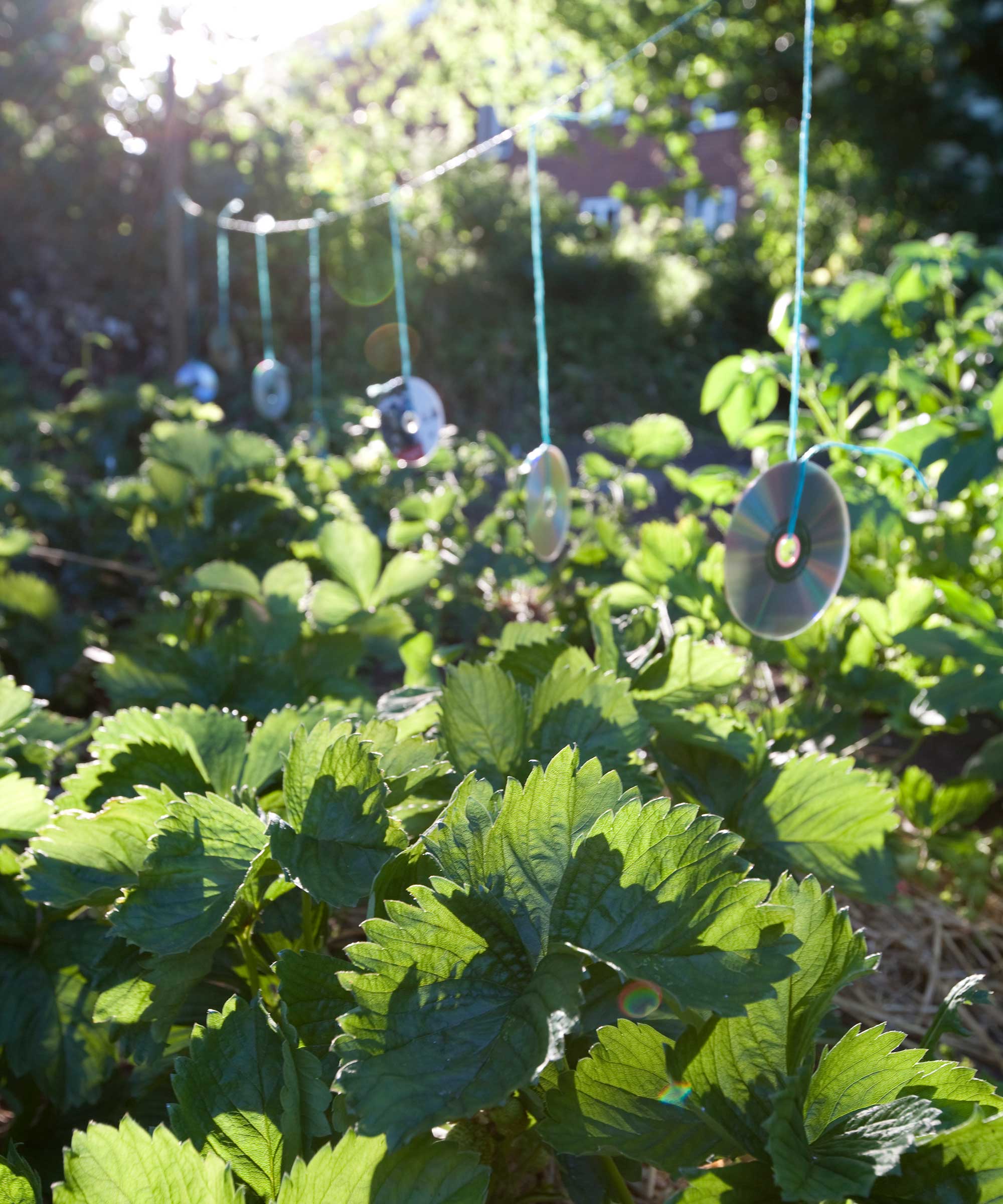DIY deer deterrents – 3 simple, budget-friendly, and expert-approved ways to keep these creatures away from your yard
From scare tactics made out of recycled goods to homemade sprays, these methods are easy to try at home


Deer may seem harmless enough, yet to so many gardeners they're a familiar nuisance year-round. These creatures have an appetite for a wide range of plants, and will happily munch on foliage, shoots, flowers, berries, and even bark to get their fill.
Tall, physical barriers are your best bet in keeping deer out, but there are also some quick and easy DIY tricks you can try. Relying on unappealing scents or simple scare tactics, these deterrents tend to be budget-friendly, too.
I asked gardening experts for their suggested DIY pest control methods for tackling deer. Below, you'll find their advice, including what not to do.
Plant strongly-scented herbs

Fragrant herbs can be off-putting to deer
Rebecca Sears, gardening expert from Ferry-Morse, recommends planting aromatic herbs around the perimeter of your garden to keep deer at bay. The scents of plants such as lavender, mint, rosemary, oregano, sage, and thyme are all unappealing to these creatures, she explains.
What's more, they make lovely additions to a backyard, are generally low-maintenance, and can be useful in the kitchen.
While herbs can be bought in small pots and planted out for quick results, many are easy to grow from seed. For the latter, consider Ferry-Morse's herb seed bundle, which includes 10 different types.
Herbal scents can be used to deter other pests, too. For instance, peppermint is thought to deter squirrels, while thyme and basil can be pest-repellent plants for mosquitoes and other types of insects.
Design expertise in your inbox – from inspiring decorating ideas and beautiful celebrity homes to practical gardening advice and shopping round-ups.

As CMO and resident green thumb for the Green Garden family of brands, Rebecca Sears nurtures the company's heritage but also looks to develop new products and solutions to help gardeners of all skill levels fuel their passion and become more successful in the garden. Rebecca has been gardening from coast to coast, first realizing her passion while living in Portland, Oregon, inspired by the public gardens throughout the city. When she relocated to the northeast, she built upon her knowledge and craft, and now her backyard garden grows larger each year.
Make a homemade spray

Combine a few store cupboard ingredients to make a deer-repelling solution
You can try utilizing other scents garden pests hate, too. According to Rebecca, a simple DIY spray made from common household items can be quite effective in keeping deer away from your plants.
'A mixture of hot sauce, garlic powder, liquid dish soap, and water can be sprayed around plants and along garden borders,' she says. 'The strong odors and taste discourage deer from feeding on or near sprayed areas.' Plus, it's an affordable and practical option that you can reapply regularly, she adds.
Amy Enfield, senior horticulturist at ScottsMiracle-Gro, also suggests using a DIY spray. However, she warns that while scent and taste repellents can be effective, relying on just one type can eventually lead to failure.
'When the same repellent is used over and over, deer become nose-blind, or accustomed to, a specific smell if it’s always present,' she says. 'If food is naturally scarce, they will eventually ignore the unpleasant smell or taste just to get a meal. Switch up your repellent every few weeks to keep the deer guessing.'
You could swap the spray for used coffee grounds, for instance, which Rebecca says can also work as a scent-based deterrent. Simply sprinkle them around plants to potentially repel deer – and some other insect pests, too.

Amy has 30 years of experience in the lawn and garden industry and has been with ScottsMiracle-Gro for 13 years. She has a BS and MS in Horticulture from Michigan State University and a PhD in Plant and Environmental Sciences from Clemson University.
Create visual deterrents

A simple deer deterrent made from reflective items can keep pesky birds away from plants, too
'Since deer are naturally skittish, startling them with unpredictable movement and reflected light can be a good way to keep them out of your yard,' says Amy. These animals are always on alert for signs of danger, she explains, and flashing lights and the movement of objects caused by the wind can mimic a predator and stop them from entering an area.
'This deterrent method can be as easy as doing a scavenger hunt around your house looking for shiny, reflective objects,' she continues. Aluminum pie pans, old CDs or DVDs, and shiny streamers can all be used. 'You will also need string or fishing line.
'Punch holes in the pie pans so you can hang them with string,' Amy says, adding that if you string two pie pans together back-to-back, they will clang in the wind – an added deterrent. 'For CDs and DVDs, simply tie a string through the hole.'
Then, all you need to do is hang your deterrents from tree limbs, fences, or hooks around your garden, she instructs, making sure they can move freely in the breeze. It's also a good idea to move the deterrents around in the yard occasionally, she adds – this will prevent deer from becoming used to them.
Visual deterrents can also be useful for protecting soft fruits from pests such as birds and other mammals.
FAQs
What should you avoid doing when trying to deter deer from your yard?
'Avoid deterrents that could harm wildlife or pets, such as chemical-based products not intended for garden use, or sharp objects like barbed wire,' says Rebecca. 'Humane deterrents prioritize the safety of both the animals and your garden.'
She also advises against relying solely on scent-based deterrents in winter. 'While aromatic herbs and repellent sprays can help deter deer during most of the growing season, these solutions may lose their effectiveness in late winter or early spring when food is scarce,' she explains. 'In these cases, supplement scent-based methods with physical barriers, such as steel garden fencing, to protect your garden.'
It's best to approach your deer problem from a few angles. As Amy points out, 'the key to success is often a combination of methods and rotating them, so that the deer don’t become accustomed to a single deterrent.'
A good way to make your yard less inviting to deer is to use plenty of deer-resistant plants. For instance, horticulturist Peggy Anne Montgomery recommends deer-resistant bulbs, such as daffodils, alliums, and hyacinths. They typically require minimal upkeep once established, she adds.
Deer aren't the only animals that can be a pain when it comes to keeping our gardens pristine. For more pest-control tips, you may want to look into ways to get rid of gophers or keep coyotes out of your yard, too.

Holly started writing about gardening five years ago, and she is a regular contributor to Homes & Gardens. She has also written many gardening features for Woman & Home and Real Homes, too. She has previous experience as a professional gardener, where she helped to plant and maintain private gardens. Holly has also looked after allotment plots over the years and loves to grow her own flowers and veggies from seed. In her spare time, she enjoys visiting local gardens, botanical drawing, and tending to her ever-growing collection of houseplants.